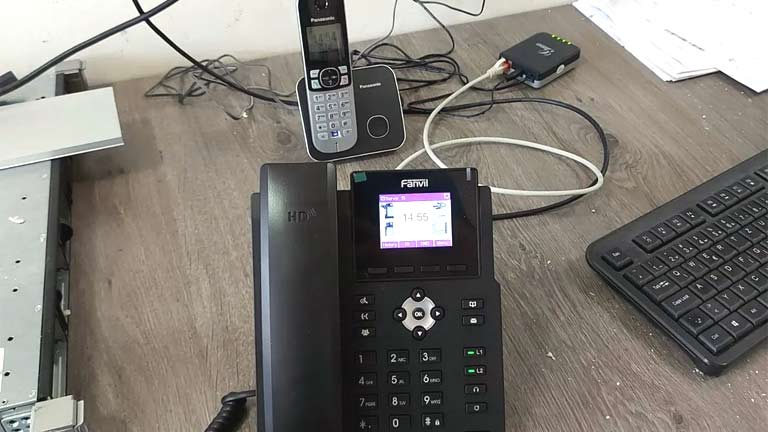
Businesses are dependent on unified communication systems for everyday processes across the organization. Often businesses face several issues with their private board switching service (PBX)-backed phone services. Traditional phone systems depend on the primary rate interface (PRI) technology that uses copper lines to transfer voice and data. The hardware is difficult to maintain and needs to be updated, leading to issues like voice call drops, inconsistent service, and difficulty connecting with remote employees. A technology solution that addresses these concerns for small business phone systems is SIP trunking. It allows companies to have a multi-line phone system without investing in new hardware by integrating Voice over Internet Protocol or VoIP services.
What is SIP Trunking?
The acronym SIP stands for session initiation protocol and is an application layer protocol. It enables a phone system to run over an Internet connection minus the analogue phone lines. Trunking is a traditional phone system’s process to create multiple user scenarios by connecting to a Public Switched Telephone Network (PSTN). SIP is a free, open-source software platform that has revolutionized phone services’ commercial use.
In the internet age, SIP trunking is a convenient technology innovation connecting an on-premise phone system with PSTN using VoIP. The technology used in SIP trunking is the same as the HTTP protocol used by browsers. Thus SIP trunking allows a company to add new phone lines and modify services without physical phone lines or new hardware.
What are its uses?
SIP trunk services are possible only with a SIP service provider. They convert the PBX into an internet-backed telephone network by unifying the organization’s communication systems. All the communication channels of the business can be synchronized in real-time. This improves productivity, collaboration, and efficiency of the organization.
Hence the SIP trunking system can be used for call setup and management for reliable and flexible communication systems. SIP is also extensible to broader messaging functions.
The working of the SIP trunking system
Session initiation protocol with VoIP services helps make business, conference, and video calls.
The core working of SIP trunking is using VoIP as an intermediate between the PBX and the internet telephone services. Earlier ISD circuits that needed physical installation were the default for voice-calling services. With SIP, the data the calling is done over networks, and the physical infrastructure is replaced with virtual infrastructure.
Hence SIP trunking includes the internet connection, an internet protocol-backing PBX, VoIP adapters and network connections. SIP trunking helps reduce traditional PBX phone system technology costs and improve efficiency. Create scalable phoning systems with the growth and expansion of the company.
What are the differences between SIP and VoIP?
SIP and VoIP both refer to the internet telephony system; they differ on some technicalities. A phone call is made over the internet without a physical telephone line in a VoIP system. In the case of SIP, it is one of the specific protocols that use VoIP.
Why is SIP trunking service important?
Traditionally enterprise communication depended on multiple Telecom providers who provided separate voice and data communication. This resulted in many issues with business communications being impacted and the inability to manage important customer calls. The pricing model of the telephone service provider was also a big challenge despite the legacy technology and call limitation. SIP calls could be routed and recorded instantly, along with email management. SIP also enabled reliable connectivity for multimedia messaging, video conferencing, instant messaging, and instant data exchange.
Who are SIP trunking providers?
Third-party communication service providers with the capability to provision VoIP between the PSTN system and an on-premise phone system are SIP trunking providers. Their services help call establishment and management systems with VoIP. The providers can support voice calls, instant messaging, media distribution, and video conferencing. They execute these capabilities by defining the messages sent across the endpoints and managing the actual elements of the call over VoIP. It is a protocol that the providers can use to deliver all internet-based capabilities but using the PBX.
When choosing a sip trunking provider, a business has to consider the following requirements. The SIP provider can offer customer support in scenarios of service outages. A typical resolution timeline for assistance and onboarding, as well as support, should be identified. Depending on the term or period the contract is concluded, the pricing models may include a long-term commitment or a short-term service need.
Conclusion: How can SIP trunk support your network?
SIP trunk services can help your business to simplify your network with convergence and open standards. It enables you to save on hardware costs and proofs your business against investment escalation for maintenance. You can quickly scale with upgrades or opt for single port termination. The capabilities would be a single link to rise from a minimum two-digit connection to simultaneous thousand-plus calls. Use a single link replacement for fixed line PST and system increase or decrease the call capacity. Minimum channels are available for interface ethernet. Flexible DID range to match the scalable requirements.
SIP trunk services are invested in bridging the communication needs of a business with SLA-defined SIP Trunking services. Our unlimited solution matrices can help your business increase its capabilities. If you are a telemarketer, you can be assured of voice connectivity with IP solutions that allow you to handle 1500 and more calls simultaneously.




